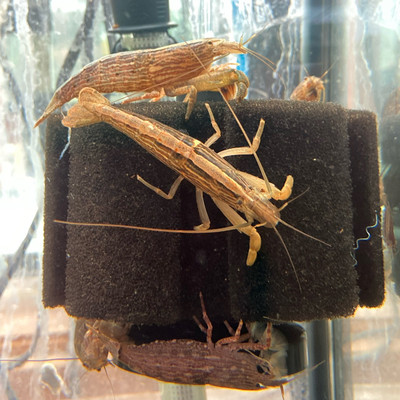Bamboo Shrimp
Posted by Max Gandara on on 24th Aug 2025
The Bamboo Shrimp, also known as the Wood Shrimp or Flower Shrimp, is a fascinating freshwater invertebrate that brings unique character to aquariums. Scientifically named *Atyopsis moluccensis*, this species is native to Southeast Asia, where it inhabits rivers and streams with steady currents. Unlike many shrimp that forage on surfaces or graze on algae, the Bamboo Shrimp is a filter feeder, using its fan-like appendages to catch tiny food particles floating in the water.
One of the most distinctive traits of the Bamboo Shrimp is its size. They can grow up to 3–4 inches long, making them one of the larger freshwater shrimp available to aquarists. Their coloration ranges from reddish-brown to tan, with some individuals showing stripes or speckles. This camouflage helps them blend into natural environments.
Since they are filter feeders, they need a tank with good water flow to help bring food to them. Powerheads, sponge filters, or HOB filters that create current are perfect for keeping them healthy. Their diet includes powdered or liquid foods such as crushed algae wafers, powdered spirulina, and fine fish foods that stay suspended in the water column.
Bamboo Shrimp are peaceful and do well in community aquariums with non-aggressive tankmates. They are best kept with other small to medium-sized fish that won’t see them as food. Because they rely on water flow and fine particles for feeding, it’s important to ensure they get enough nutrition—sometimes requiring targeted feeding in the current.
These shrimp also need stable water conditions. They thrive in temperatures between 72–82°F, a pH around 6.5–7.5, and clean, well-oxygenated water. Since they are sensitive to poor water quality, regular maintenance and monitoring are key.
Bamboo Shrimp add not only beauty but also intrigue to aquariums with their unusual feeding behavior. Watching them sit in the current, fans extended, is a captivating sight for aquarists. With proper care, they can live up to 2 years or more, making them a rewarding choice for anyone looking to add something different to their freshwater setup.

